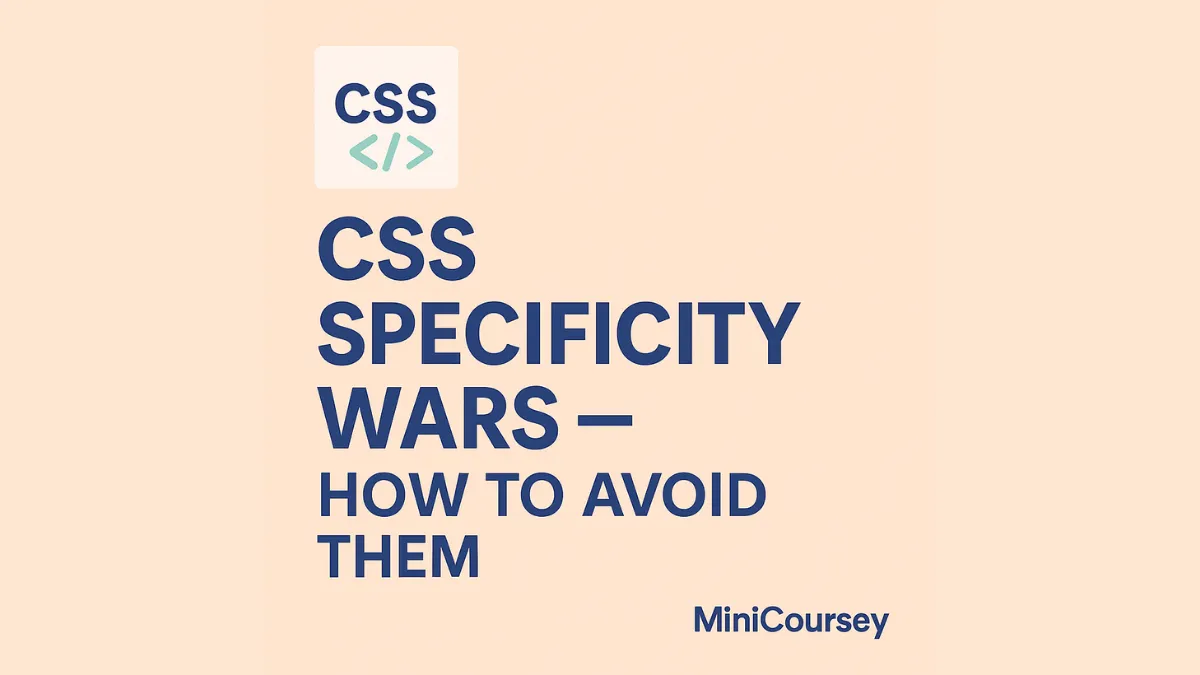Ever ended up with tangled, messy CSS that’s impossible to override without !important? You’re not alone — this is the classic “specificity war.” When selectors get too specific, it becomes a battle to write even more specific rules just to make changes stick. Good news: you can avoid this! In this MiniCoursey quick guide, you’ll learn what causes specificity wars, how the cascade works, and best practices for writing simple, override-friendly CSS.
What is Specificity?
Specificity is a scoring system browsers use to decide which CSS rule wins when multiple rules apply to the same element. IDs have the highest weight, followed by classes, then elements.
h1 {
color: black;
}
#hero h1 {
color: red; /* Wins! */
}
In this example, the ID selector overrides the plain h1 selector because it’s more specific.
What Causes Specificity Wars?
- Using too many IDs in your CSS.
- Deeply nested selectors for no good reason.
- Relying on
!importantto “fix” conflicts.
How to Avoid Them
- Keep selectors shallow — target classes or elements directly.
- Use utility classes or BEM naming for predictable overrides.
- Organize with Cascade Layers (
@layer) to control conflicts cleanly.
💡 Pro Tip: Use the universal selector
:where()to reset base styles with zero specificity impact.
⚠️ Common Mistake: Never stack more IDs or inline styles to “win” — refactor instead!
FAQ
Q: Does !important ever make sense?
A: Rarely — it’s fine for utility helpers or quick fixes, but not for normal styling.
Q: Do frameworks help?
A: Yes — using utility-first frameworks like Tailwind or SCSS conventions can help reduce specificity problems.
Related Link
👉 Check out previous: CSS Cascade Layers vs Specificity — What’s the Difference?
Where to Learn More
Read MDN’s specificity docs for details and try tools like CSS Specificity Calculator to check your selectors.
Conclusion
Congrats — you now know how to avoid CSS specificity wars! Keep your selectors simple, your cascade clear, and your CSS easy to maintain.
✨ Bookmark MiniCoursey for more quick & free mini courses!

